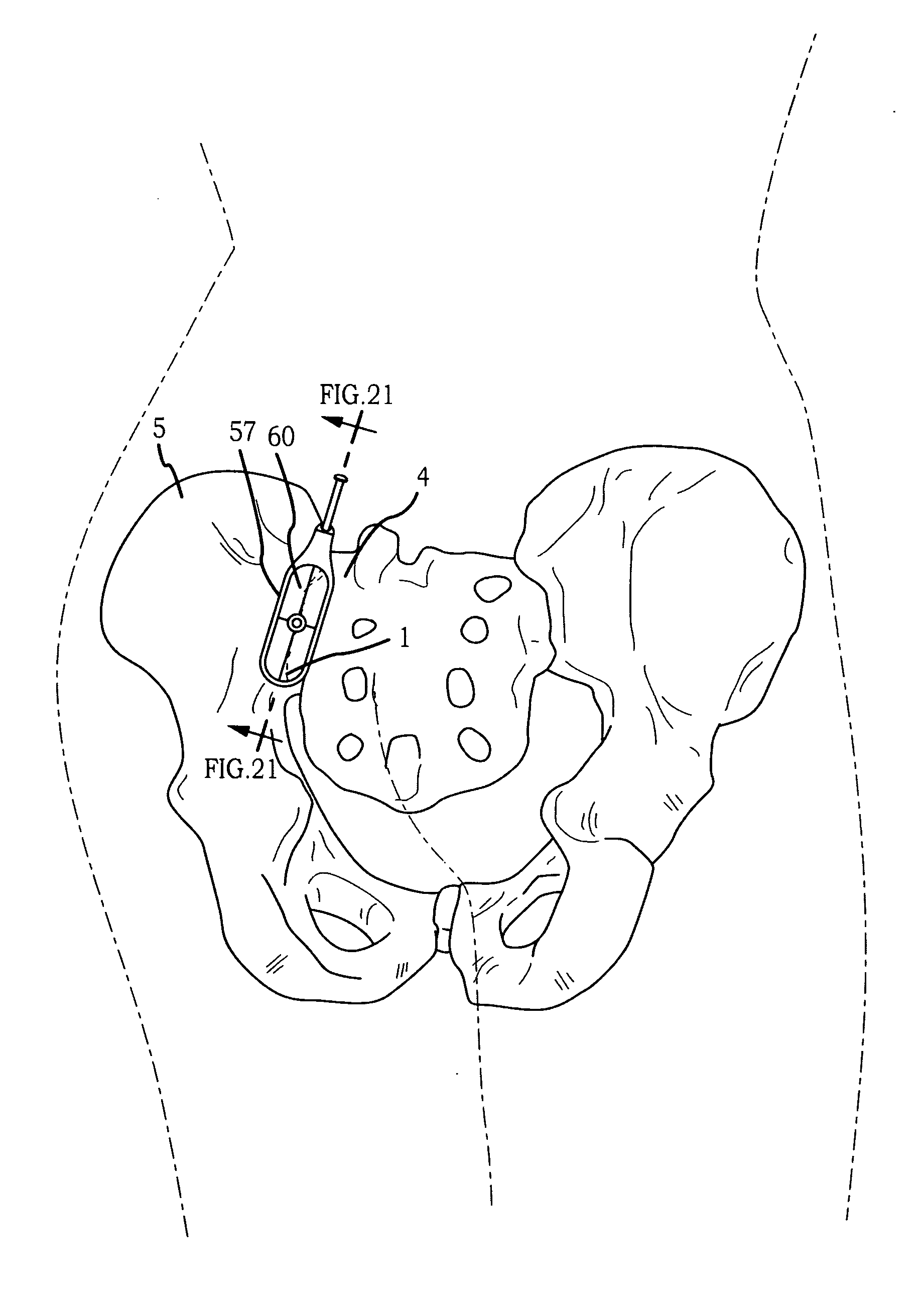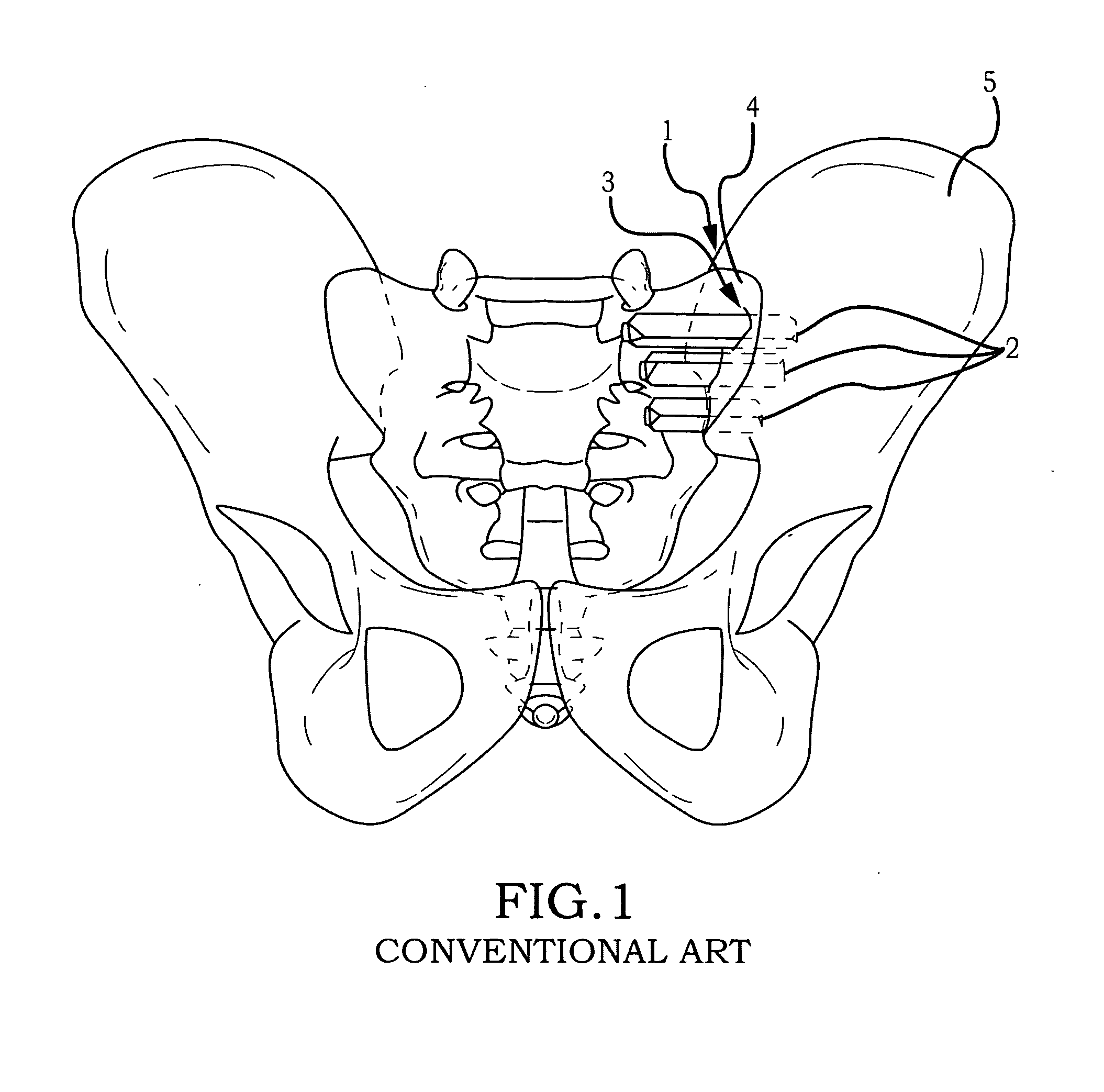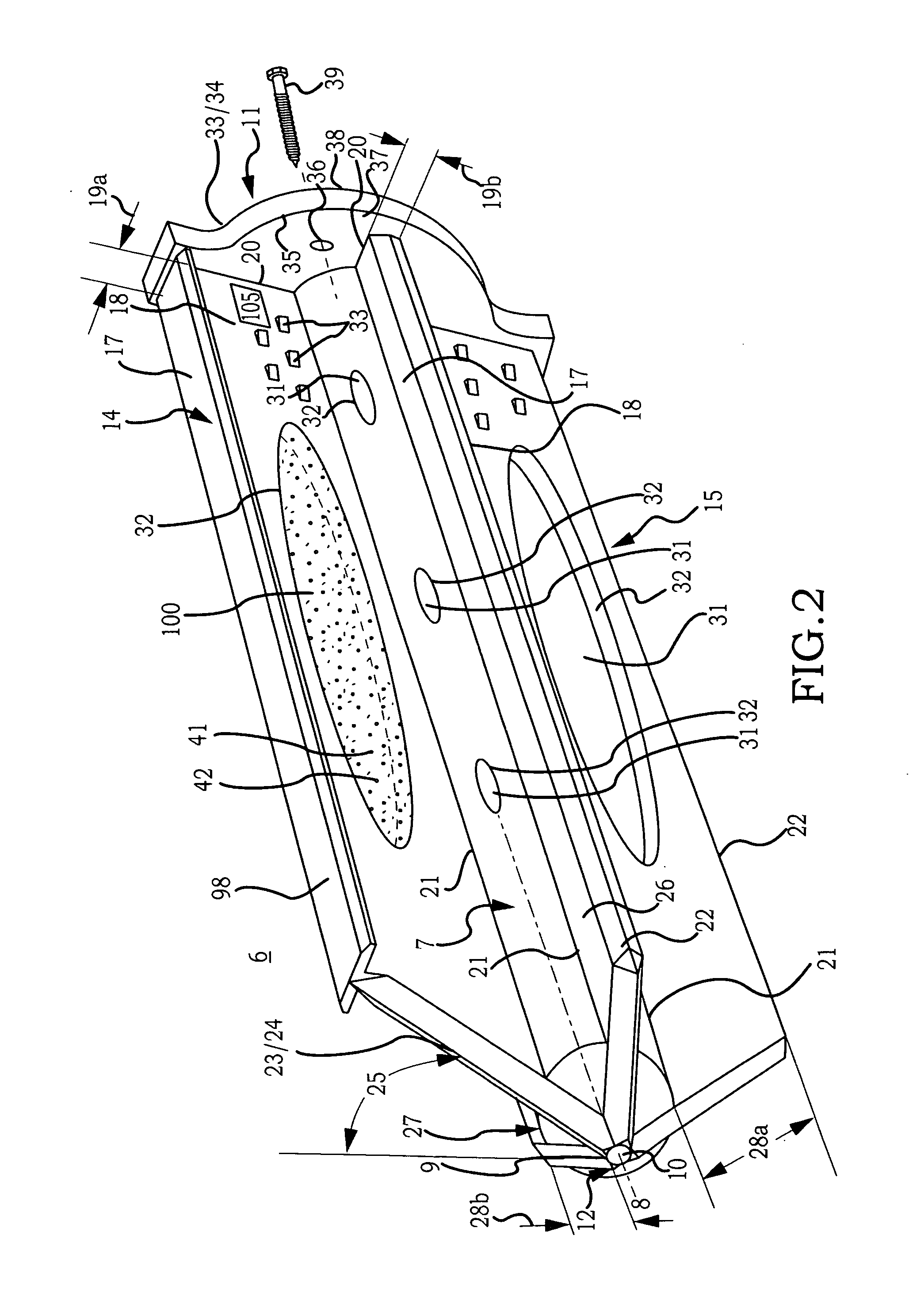Sacroiliac joint fixation system
a fusion system and sacroiliac joint technology, applied in the field of sacroiliac joint fixation fusion system, can solve the problems of increased operative time, increased hospitalization, pain, recovery time,
- Summary
- Abstract
- Description
- Claims
- Application Information
AI Technical Summary
Benefits of technology
Problems solved by technology
Method used
Image
Examples
example 1
[0104]An embodiment of the inventive sacroiliac joint implant having a configuration substantially as shown by FIGS. 3-6 and as above-described was inserted into a patient under direct visualization and with assisted lateral fluoroscopy. The procedure was performed for the purpose of assessing in an actual reduction to practice the ability of the inventive sacroiliac joint implant to be safely implanted between inferior or caudal portion the articular surfaces of the sacroiliac joint substantially as shown in FIG. 25 to confirm the that implantation of the sacroiliac joint implant into a implant receiving space configured substantially as above-described acts to immobilize the sacroiliac joint. The sacroiliac joint implant as above-described implanted into the inferior (caudal) portion of the sacroiliac joint proved to immediately immobilize the sacroiliac joint.
[0105]As can be easily understood from the foregoing, the basic concepts of the present invention may be embodied in a var...
PUM
 Login to View More
Login to View More Abstract
Description
Claims
Application Information
 Login to View More
Login to View More - R&D
- Intellectual Property
- Life Sciences
- Materials
- Tech Scout
- Unparalleled Data Quality
- Higher Quality Content
- 60% Fewer Hallucinations
Browse by: Latest US Patents, China's latest patents, Technical Efficacy Thesaurus, Application Domain, Technology Topic, Popular Technical Reports.
© 2025 PatSnap. All rights reserved.Legal|Privacy policy|Modern Slavery Act Transparency Statement|Sitemap|About US| Contact US: help@patsnap.com



